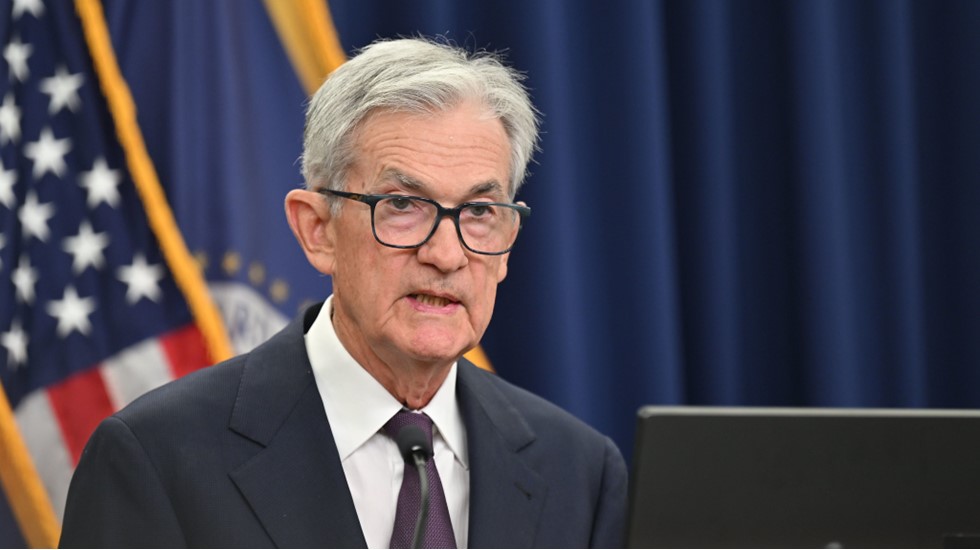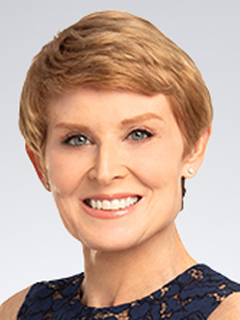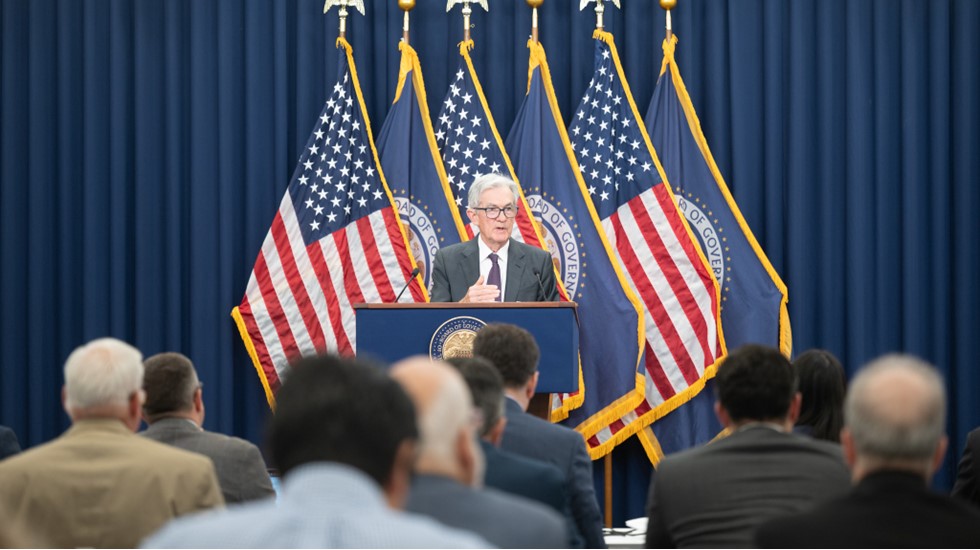Fed cuts amidst dueling mandate
December “not a forgone conclusion”

October 29, 2025
The Federal Open Market Committee (FOMC), the policy setting arm of the Federal Reserve, cut short-term interest rates by another quarter point to a target range of 3.75% to 4.0% today and announced an end quantitative tightening (QT), starting December 1.
Most notable about the decision is that it was contentious. Newly appointed Governor Stephan Miran dissented in favor of a more aggressive one-half percent cut. Kansas City President Jeff Schmid dissented against any cuts.
Dissents by Fed presidents are rarely done in a vacuum. He did not want to cut in September. Another six participants at the last meeting wanted to stop in September. He represented their views by dissenting in favor of no cut in rates.
Chairman Jay Powell characterized the cut as another “risk management” move. He was careful to underscore that he sees policy as modestly restrictive. He stressed that the Fed is still committed to ensuring that any tariff-induced inflation does not stick.
He used the term “credible commitment” when referring to ensuring that occurs. Central bankers who have credibility in fighting inflation do not need to say that. Inflation has been above the Fed’s target for more than four years and is moving up again.
Powell underscored that the government shutdown is complicating the decision-making process. He said a cut in December was “not a foregone conclusion…It is a possibility that you really can’t see, so let’s slow down,” he explained.
The Fed is relying more on private sector data and anecdotes in the absence of government data. We have already set back data collection. Even if the government shutdown were to end tomorrow, which is highly improbable, we could still be short on the data front in December.
The Fed’s Beige Book for October revealed signs of stagflation, with the labor market weak and some signs that firm engaged in “opportunistic pricing” and sticky service sector inflation. The reduction in competition due to tariffs and rising inequality created fertile ground for price hikes.
The labor market is clearly a larger concern for the chairman than some of his colleagues. The challenge is whether the two cuts will do much to stimulate demand in the labor market, given structural shifts. We are losing workers via curbs on immigration.
Labor force participation has also dropped, which is a sign of weakness. Powell had an almost Pollyanna attitude about the weakness in the labor market, arguing that it has not weakened further in recent months. Private sector data suggests otherwise. Meanwhile, he believed another quarter point was necessary to shore up the labor market.
The demand for workers has weakened as well. Everything from the margin squeeze to the tariffs, escalating uncertainty and higher rates for longer took a toll on demand. However, financial market conditions have eased in recent months, The challenge is whether additional labor market weakness is cyclical or structural. Cuts in short-term interest rates cannot reverse a structural drop in the demand for workers.
The regional Fed presidents are up for reappointment by February 28, 2026. Powell was asked about a timeline for those approvals. He said the Fed would complete those approvals in a “timely way.” At least one Fed president, Anna Paulson of the Philadelphia Fed, has already been approved for another five years. She was named president of the Philadelphia Fed on July 1.
The move to stop QT is more technical than stimulative. Liquidity in the overnight fed funds market has begun to dry up. That is akin to diving into a pool that is half full; the risk of getting hurt goes up. The Fed is attempting to keep the water level high enough to avoid an accident.
Powell repeated his refrain that there is “no risk-free path for policy.” The Fed’s mandate has shifted from a dual mandate to promote price stability and full employment to a dueling mandate. Inflation and unemployment are edging up in tandem. We have not seen anything like that since the 1970s; it is the Fed’s job to ensure we do not get a persistent bout of stagflation.
The Fed is careful not to repeat the mistakes of the past. That does not preclude it making new mistakes. Full employment cannot be accomplished without price stability. We are not there yet.
The Fed is divided in its decision to cut rates again.

Diane Swonk
KPMG Chief Economist
Bottom Line
The Fed is divided in its decision to cut rates again. That debate will heat up along with inflation as we get closer to December as the unemployment rate rises. A rate cut in December is not a done deal. We currently expect the Fed to cut one more time in December due to labor market weakness, but the optics of a cut while inflation is still moving up are not pretty. (Understatement.)
Explore more

Powell corrals the cats
A “risk management cut”

KPMG Economics
A source for unbiased economic intelligence to help improve strategic decision-making.

Policy in Motion: Insights for navigating with confidence
Your resource for the latest on trade, tariff and regulatory policy changes.
Subscribe to insights from KPMG Economics
KPMG Economics distributes a wide selection of insight and analysis to help businesses make informed decisions.
Meet our team
